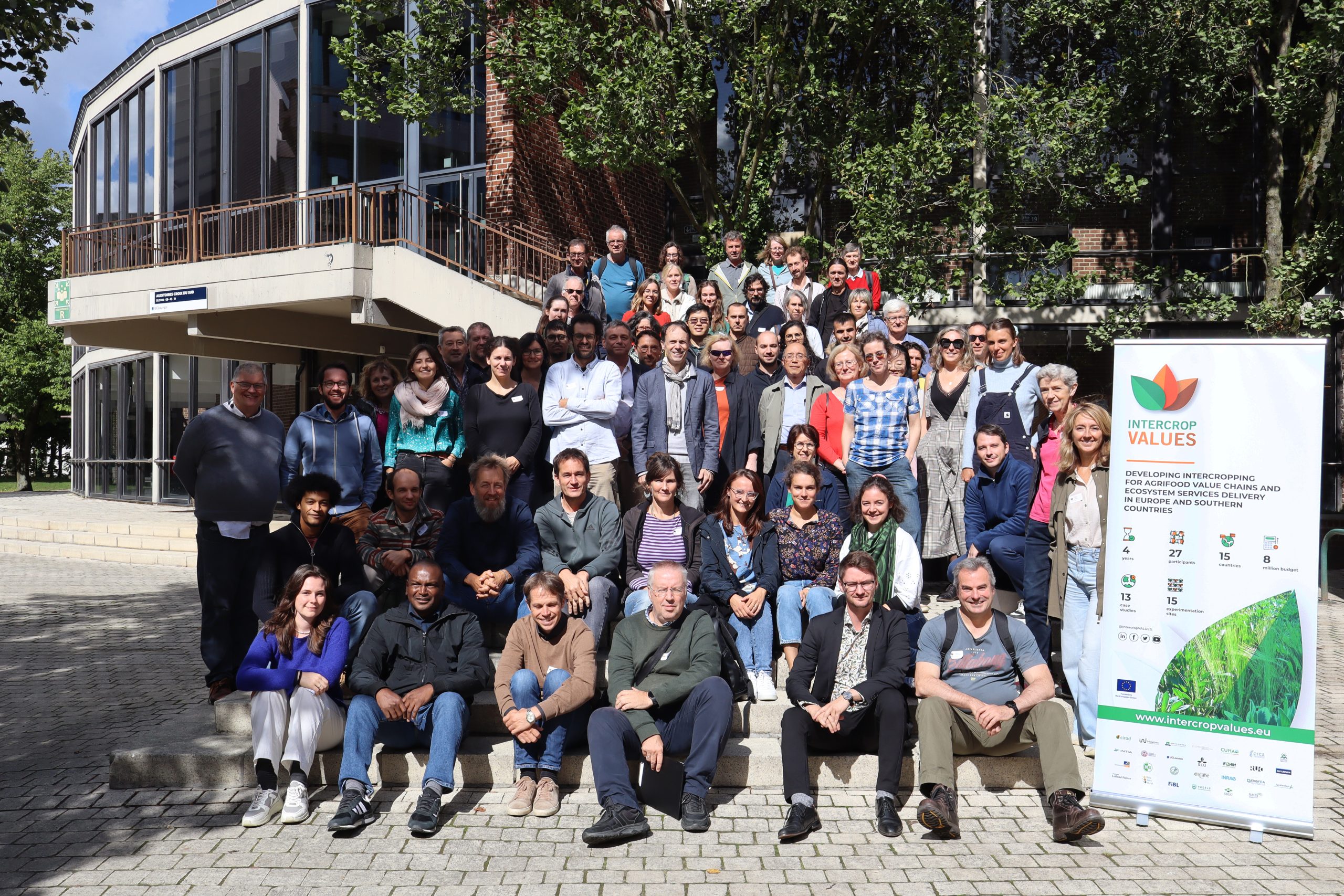Members of the 25 organisations participating in the IntercropVALUES project met in Leuven (Belgium) for their second annual consortium meeting. Their aim was, on the one hand, to discuss all the work carried out since the project began two years ago. In several working sessions, the partners presented their results, highlighting the milestones achieved and the obstacles encountered in the process. The group also outlined the plan for the coming year, sharing their strategy for overcoming barriers and continuing to move towards the project’s objectives.
The project seeks to leverage the advantages of intercropping to design and manage productive, diversified, resilient, profitable and environmentally friendly cropping systems that are acceptable to farmers and agri-food chain actors. This ambitious goal is being pursued by 13 co-innovation case studies (CICS) from the EU (9), the United Kingdom (1), Serbia (1), Switzerland (1) and Mozambique (1). The CICS leaders, representing both conventional and organic farming, as well as short and long value chains, have set their own objectives and agenda for this year with the aim of coordinating their activities.
The project is now at its halfway point. With two years to go and some of the expected results already available, this is a crucial moment to adjust the course and ensure that the set objectives are successfully achieved. Throughout the meeting, members worked collaboratively to align approaches and continue to make solid progress towards the expected results.
The three-day event was organised by the Université Catholique de Louvain (UCLouvain), one of the project partners and leader of work package six, which focuses on identifying barriers and bottlenecks that hinder the implementation of intercropping practices across Europe. Its team is also working to identify potential levers that can drive change, helping to create opportunities for widespread adoption of intercropping. By analysing both the obstacles and catalysts for transition, UCLouvain is helping to shape strategies that support the sustainable integration of intercropping into agricultural systems.
The consortium, coordinated by France’s Agricultural Research Centre for International Development (CIRAD), brings together research teams from national or regional universities and technology institutes, development agencies, cooperatives, SMEs and rural networks. The diversity of participants responds to the need for a multidisciplinary approach to address the challenges facing intercropping at the value chain level.
On the first day, the partners responsible for communication, dissemination and exploitation strategy provided an overview of the current situation and outlined how each partner can contribute to promoting the project’s results. These results, together with the 10 practice summaries available, were presented in another session on the same day. In the last session, attendees heard from representatives of the China Agricultural University, one of the project partners, who detailed their approach to intercropping and shared their knowledge of the techniques and machinery they have developed.
During the morning of the second day, the team held talks on various topics, including modelling, cost-benefit analysis protocols and the importance of adapting machinery to the needs of intercropping practices. The afternoon was devoted to collaborative sessions between members of the different work packages. The day ended with a visit to a local farm, where participants had the opportunity to learn about some of the more practical aspects of intercropping.
On the third and final day, the team focused on the policies and changes needed at all administrative levels to create a regulatory environment conducive to the adoption of intercropping, thereby seeking to achieve the European Union’s strategic objectives. With this goal in mind, the team presented the first policy brief, a key document that identifies the main barriers to intercropping in Europe and proposes policy changes to support its adoption. Among those in attendance was the Project Officer responsible for the IntercropVALUES project, who shared positive comments on the status of the project and the work carried out by the consortium.
With the thirteen CICS projects progressing well, new research results are expected to emerge over the coming year. These results will be consolidated at the consortium’s next annual meeting, the location of which is yet to be determined. This upcoming meeting will provide a clearer understanding of the key aspects of intercropping practices and outline the way forward to make their implementation a sustainable reality in Europe.
About the project
IntercropVALUES, funded by the European Commission through the Horizon Europe Research and Innovation Programme, has a project website (www.intercropvalues.eu) and several social media channels where stakeholders can find more information about its activities and results in the coming years. A calendar of events, a section on scientific publications and news are already available on the site. The project also plans to hold two summer/winter courses for postgraduates, webinars for the processing and machinery industry, training courses for farmers and advisors, and two conferences.
INICIATIVAS INNOVADORAS is participating as the communications manager and also assisting in the coordination of the project.
